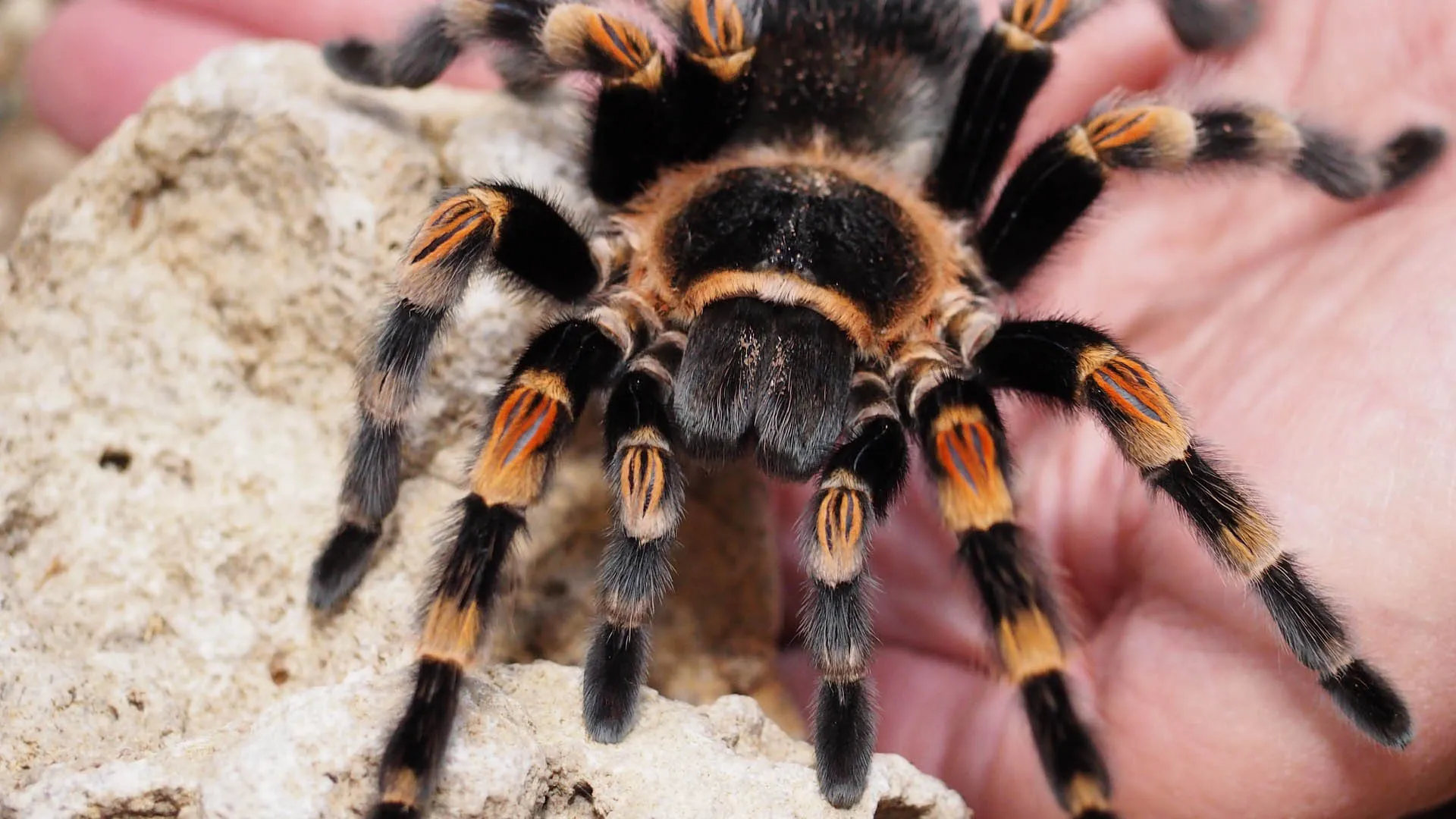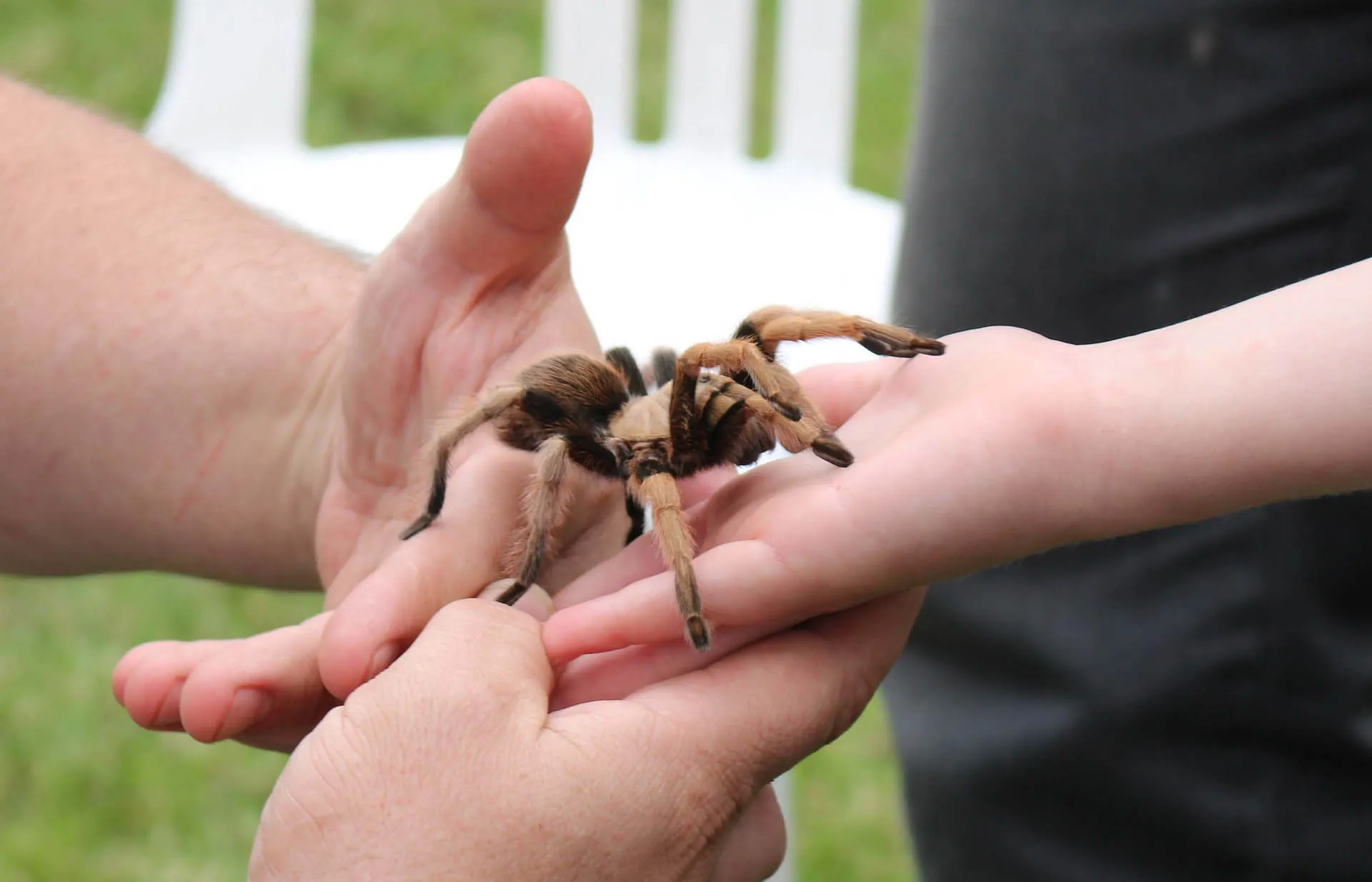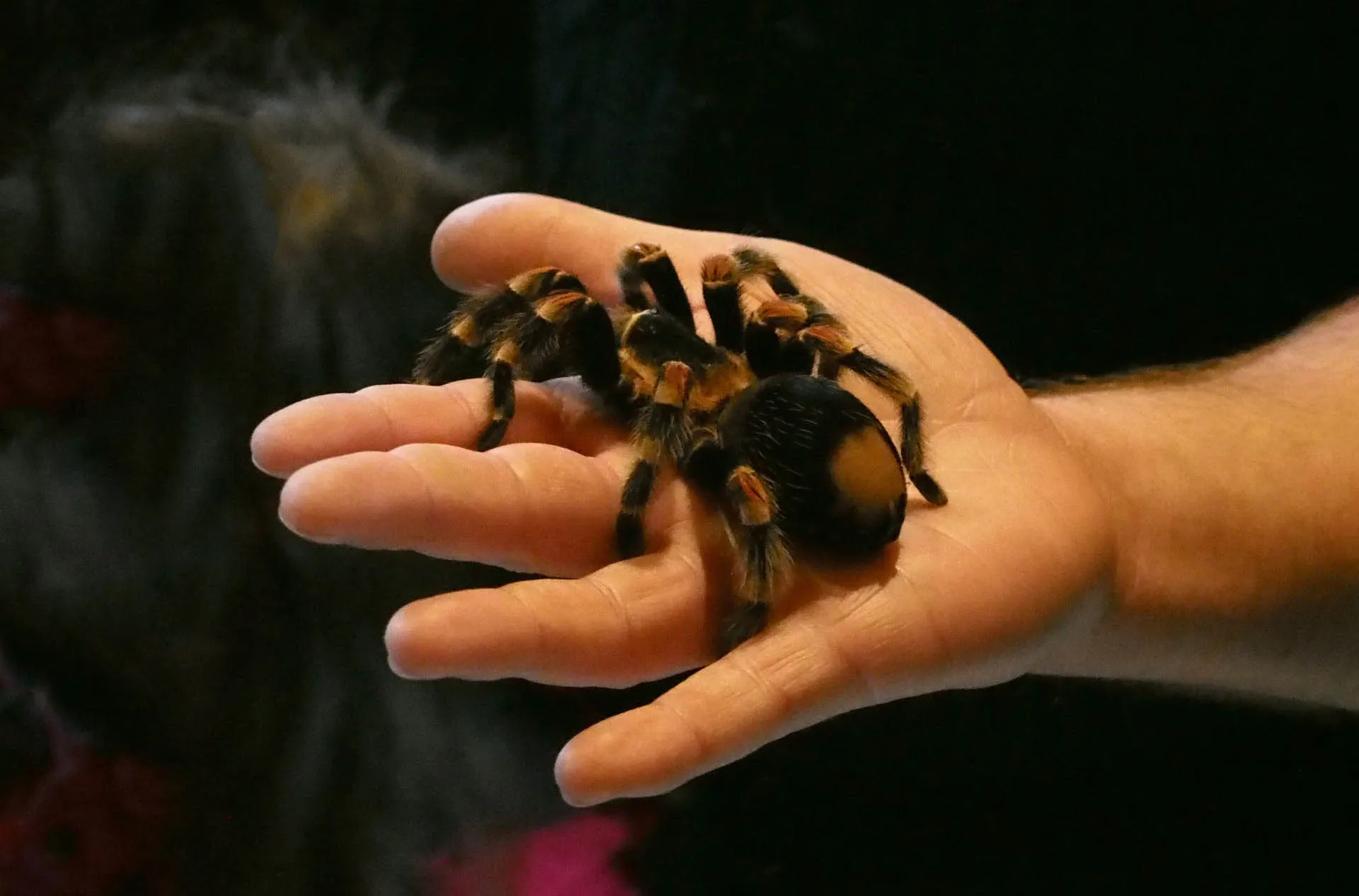Understanding Tarantula Behavior
Before you even consider holding a tarantula, it’s crucial to understand their behavior. These fascinating creatures are not cuddly pets; their reactions are based on instinct and survival. Understanding their natural tendencies will greatly enhance your safety and the spider’s well-being. Tarantulas are generally solitary animals and prefer to be left alone. They are most active during the evening and night. Their behavior can vary greatly depending on the species and individual temperament. Some species are more docile than others, and some individuals are more defensive than others. It is always best to err on the side of caution and approach any tarantula with respect and awareness.
Tarantula Temperament & Species
Different tarantula species exhibit different temperaments. Some, like the Chilean Rose Hair, are known for being relatively docile and are often recommended for beginner keepers. Others, such as the Cobalt Blue, can be very defensive and are best left to experienced handlers. Researching the specific species you own is paramount. Learn about its typical behavior, defensive postures, and venom potency. Consider that even within a species, individual tarantulas can vary in temperament. A tarantula’s personality can be influenced by factors like its age, environment, and past experiences. Young tarantulas, for instance, can be more skittish than adults. Always observe your tarantula closely before attempting any handling.
Common Tarantula Reactions

Tarantulas have several ways of communicating their discomfort or defensiveness. The most common reaction is the flicking of urticating hairs, which are tiny, barbed hairs that cause intense itching and irritation upon contact with skin. They might also raise their front legs in a threat posture, rear up, or even attempt to bite. Some species may run away and hide. A tarantula that feels threatened will often display these warning signs before resorting to a bite. Recognizing these signs is crucial for avoiding a potentially negative interaction. Never force a tarantula to interact with you. Always respect its boundaries and be prepared to back off if it shows signs of stress.
Preparing to Handle Your Tarantula
Proper preparation is essential for safe and successful tarantula handling. This includes gathering the right supplies and setting up a safe environment. Rushing into handling without adequate preparation significantly increases the risk of injury to both you and the spider. Before you even consider touching your tarantula, ensure you have a clear understanding of its needs and potential hazards. Proper preparation minimizes stress for the tarantula and maximizes your ability to handle it safely. Remember that handling should always be a calculated decision, not a casual impulse.
Essential Supplies & Equipment
You will need several items to prepare for handling. You should wear gloves, preferably disposable, to protect your hands and minimize any potential contact with urticating hairs. Have a clear, secure container or enclosure readily available to transfer the tarantula back into its habitat if it becomes agitated. It’s also good to have a soft, flat surface, such as a table covered with a towel, in case the tarantula falls. Ensure your hands are clean and free of any lotions, perfumes, or other substances that could potentially harm the tarantula. A gentle brush can be helpful to remove any urticating hairs that might land on your skin.
Creating a Safe Handling Environment

The environment where you handle your tarantula is equally important. Choose a well-lit, uncluttered area where you can easily see and move around. Eliminate any potential hazards, such as dangling cords or objects that could fall and injure the spider. The surface should be at a height that allows you to comfortably handle the tarantula without straining your back. Make sure the room temperature is comfortable for both you and the tarantula. Ensure the room is free from sudden loud noises or movements that could startle the tarantula. Having a calm, controlled environment is essential for a positive handling experience.
The Step-by-Step Guide to Holding a Tarantula
Handling a tarantula should always be approached with caution and respect. This step-by-step guide provides a framework for safe handling, but always remember that individual tarantulas may react differently. Pay close attention to the spider’s behavior throughout the process and be prepared to adjust your actions accordingly. Handling should be a brief and controlled experience. Prioritize the tarantula’s well-being above all else. Never force the interaction, and always be prepared to end it if the spider shows signs of stress.
Approaching Your Tarantula
Before attempting to pick up your tarantula, observe its behavior. If it appears relaxed and is not displaying any defensive postures, you can proceed. Gently open the enclosure and slowly introduce your hand. Avoid sudden movements. Allow the tarantula to come to you. Do not try to grab or corner it. If the tarantula hesitates, give it time and avoid rushing the process. You can gently coax it onto your hand by nudging it with a soft brush or by creating a gentle pathway with your other hand. The goal is to make the tarantula feel safe and in control of the situation.
Proper Hand Positioning & Support

Once the tarantula is on your hand, support its body from underneath. Do not try to lift it up in the air. Use both hands to provide a secure platform. One hand should be positioned under the tarantula’s abdomen to provide support. The other hand can gently guide the tarantula. Keep your movements slow and deliberate. Never squeeze the tarantula or restrict its movement. Be mindful of the tarantula’s legs and avoid trapping them. Be prepared for the tarantula to move. Do not panic or make sudden movements.
Avoiding Drops & Accidents
The most significant danger when holding a tarantula is a fall. Tarantulas can be injured or killed by even a short drop. Keep the tarantula close to the ground or surface. If the tarantula starts to fall, try to gently guide it onto a soft surface. Avoid trying to catch it, as this could lead to injury. Always supervise children and other individuals when they are handling tarantulas. Do not attempt to handle a tarantula when you are tired or distracted. Make sure your hands are dry. A wet or sweaty hand can make it harder to maintain a secure grip.
Post-Handling Care & Observation
After handling your tarantula, proper care and observation are essential. This helps ensure the spider’s well-being and allows you to assess the handling experience. Providing the right after-care is crucial for the long-term health and happiness of your tarantula. Remember that even a successful handling session can be stressful for the spider. Take the time to observe your tarantula closely after any interaction.
Recognizing Stress Signs in Your Tarantula

After handling, observe your tarantula for any signs of stress. These may include rapid movement, a change in posture, flicking urticating hairs, or a refusal to eat. If the tarantula seems agitated or distressed, return it to its enclosure immediately. Provide a quiet environment and avoid any further interaction for a few days. Monitor the tarantula’s feeding habits. A stressed tarantula may refuse to eat. If the tarantula consistently exhibits signs of stress after handling, it may be best to avoid handling it altogether. Respect the spider’s boundaries.
Cleaning & Sanitizing After Handling
Always wash your hands thoroughly with soap and water after handling your tarantula, even if you wore gloves. This helps remove any potential urticating hairs or allergens. Sanitize any surfaces that may have come into contact with the tarantula or its enclosure. This can be done with a reptile-safe disinfectant. Clean the handling container. If you used a container to transfer the tarantula during handling, clean and disinfect it. This prevents the spread of any potential pathogens. Regularly cleaning and sanitizing your handling equipment is a good practice for maintaining the health and safety of both you and your tarantula.
Handling Tarantulas: Dos and Don’ts
This list summarizes the key guidelines for handling tarantulas, providing a quick reference to help you ensure your safety and the spider’s well-being. Always prioritize safety, observation, and respect for the animal’s needs. Handling tarantulas can be a rewarding experience when done safely and responsibly.
Do Handle with Calm Confidence

A calm and confident demeanor is crucial. Tarantulas can sense your nervousness. Approach the handling process slowly and with a calm attitude. Avoid any sudden movements or loud noises. A calm environment minimizes stress for the tarantula, making the experience safer for both parties. Your calmness can reduce the likelihood of the tarantula becoming defensive.
Don’t Use Scented Products
Avoid using scented lotions, perfumes, or hand sanitizers before handling your tarantula. These scents can be irritating or even harmful to the spider. Tarantulas have sensitive sensory systems. Strong smells can cause stress and potentially trigger defensive behavior. Always wash your hands thoroughly with unscented soap and water before any interaction. The goal is to provide a neutral and safe experience for the tarantula.
Don’t Handle During Molting
Never attempt to handle a tarantula that is in the process of molting or is about to molt. During this time, the tarantula’s exoskeleton is soft and vulnerable. Handling can cause serious injury or even death. The tarantula may also be more stressed and defensive during this vulnerable period. Leave the tarantula undisturbed in its enclosure. Provide a safe and stable environment. After molting, wait several days for the new exoskeleton to harden completely before attempting to handle the spider.
Potential Risks & Safety Measures

Handling a tarantula carries certain risks, including the possibility of bites and allergic reactions. Understanding these risks and taking appropriate precautions is essential for ensuring a safe and enjoyable experience. Always be prepared for potential hazards. Knowledge and preparation are the best defenses when handling any potentially dangerous animal.
Tarantula Bites & Their Management
While tarantula bites are rarely life-threatening to humans, they can be painful. The severity of a bite depends on the species of tarantula. Some species have more potent venom than others. The symptoms of a bite may include pain, redness, swelling, and itching at the bite site. In some cases, muscle cramps or nausea may also occur. If you are bitten by a tarantula, remain calm. Wash the bite area thoroughly with soap and water. Apply a cold compress to reduce swelling. Monitor yourself for any signs of a severe allergic reaction, such as difficulty breathing, swelling of the face or throat, or dizziness. Seek immediate medical attention if you experience any severe symptoms.
Allergic Reactions & Precautions
Some people may be allergic to tarantula venom or urticating hairs. Allergic reactions can range from mild skin irritation to severe anaphylaxis. If you have a known allergy to insect venom, consult with your doctor before handling a tarantula. If you experience any symptoms of an allergic reaction after handling a tarantula, such as hives, itching, swelling, or difficulty breathing, seek immediate medical attention. Always keep an epinephrine auto-injector (EpiPen) on hand if you are at risk of anaphylaxis. Be prepared to handle a potential allergic reaction, and always prioritize your safety.
Conclusion

Holding a tarantula can be a rewarding experience for the knowledgeable and responsible owner. By understanding tarantula behavior, preparing thoroughly, following safety guidelines, and respecting the animal’s needs, you can minimize risks and create a positive interaction. Remember that the well-being of the tarantula should always be your top priority. If you are unsure about any aspect of handling, it is always best to err on the side of caution and consult with an experienced tarantula keeper or a veterinarian specializing in exotic animals. Enjoy the unique experience of interacting with these fascinating creatures, and always prioritize safety and respect.
